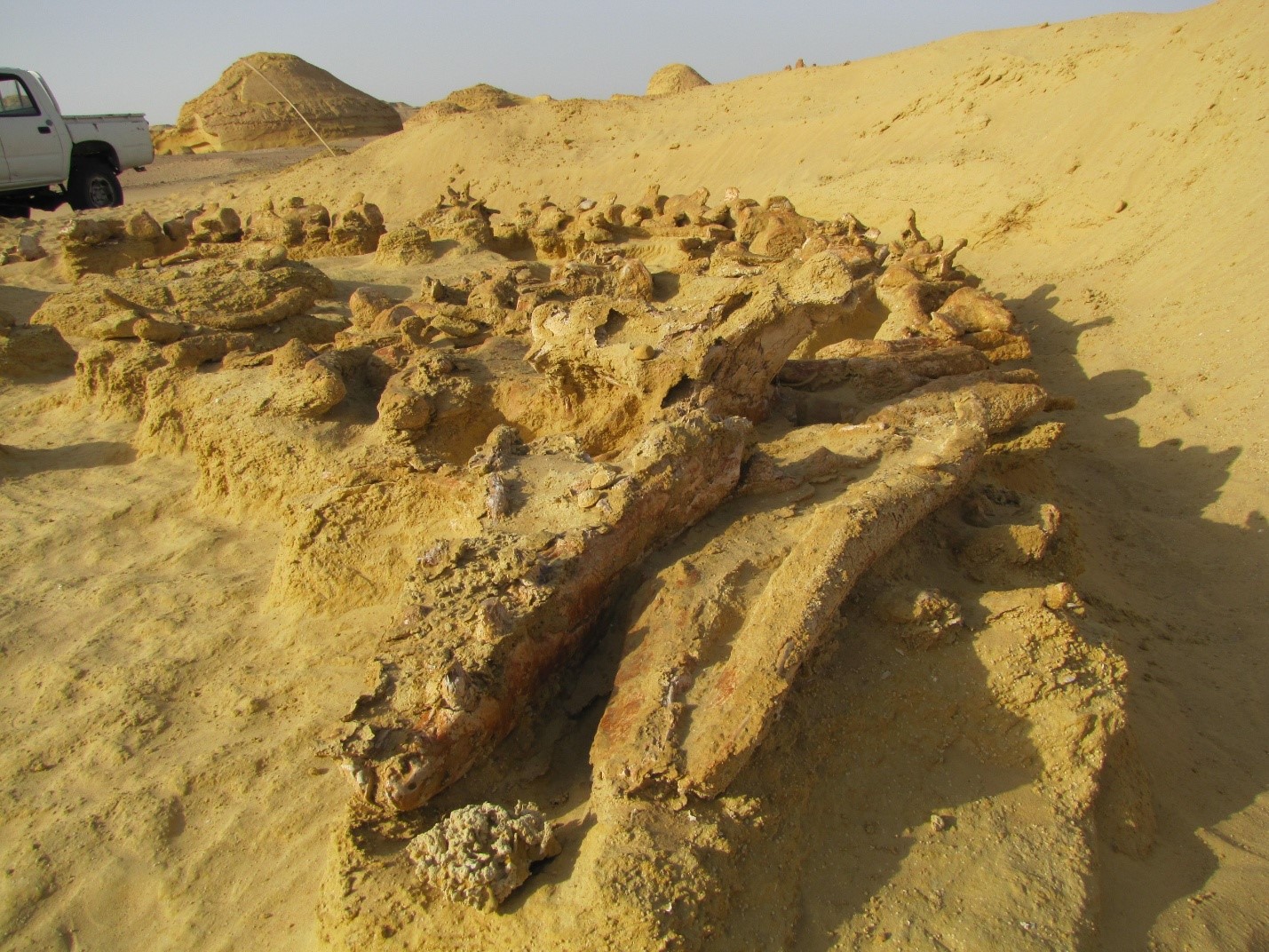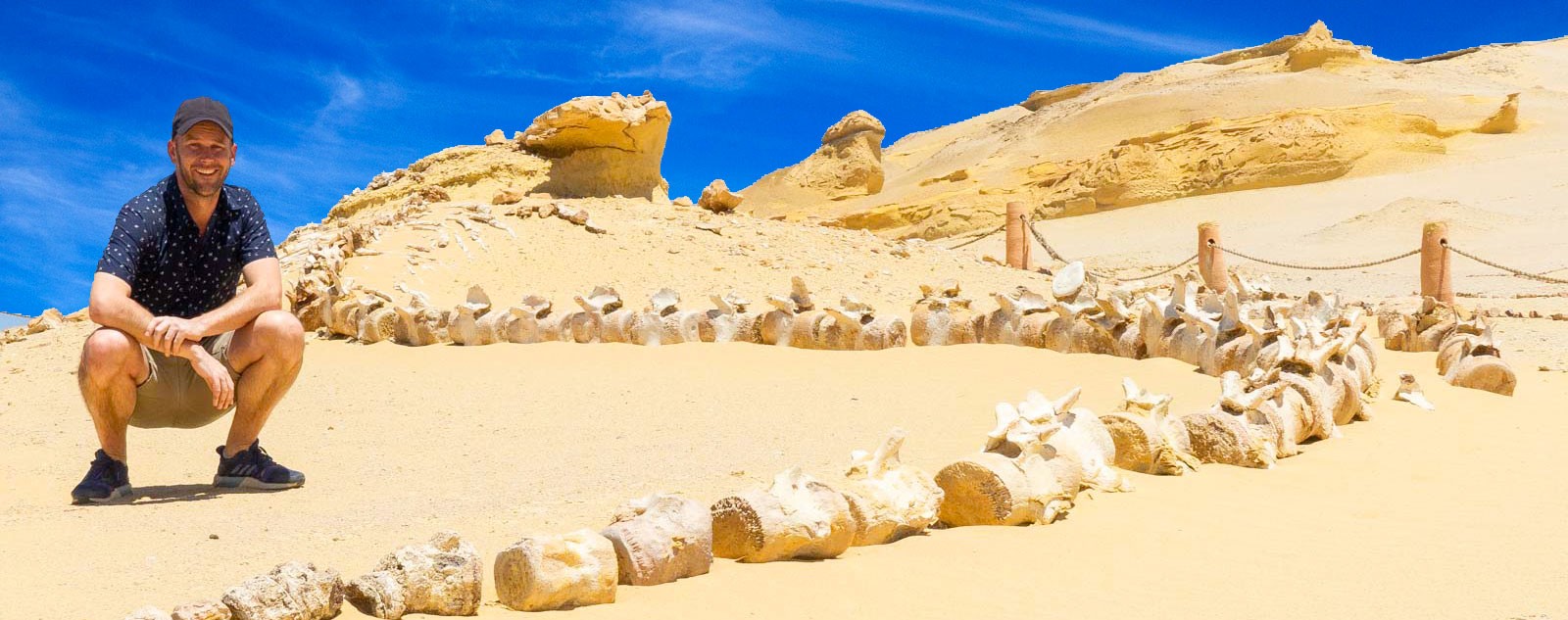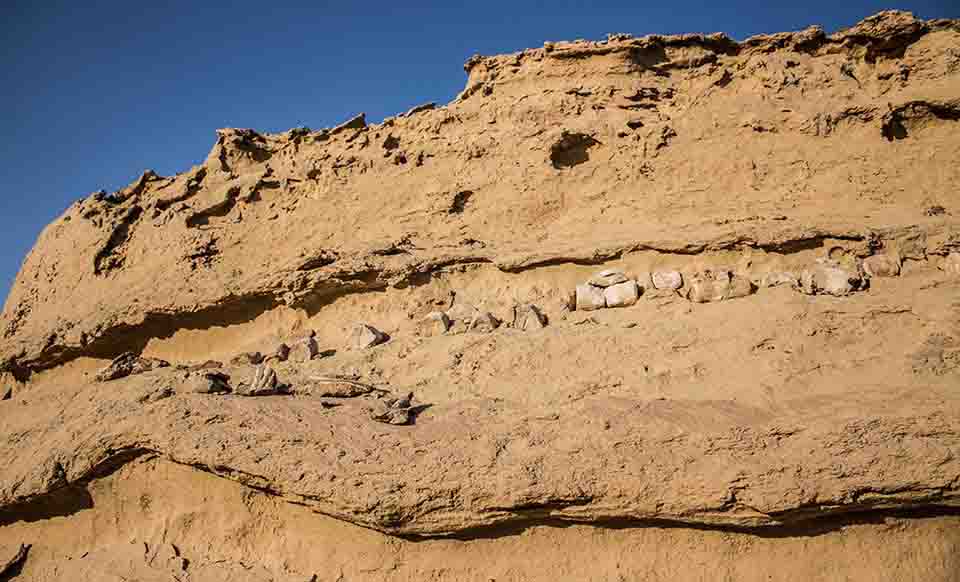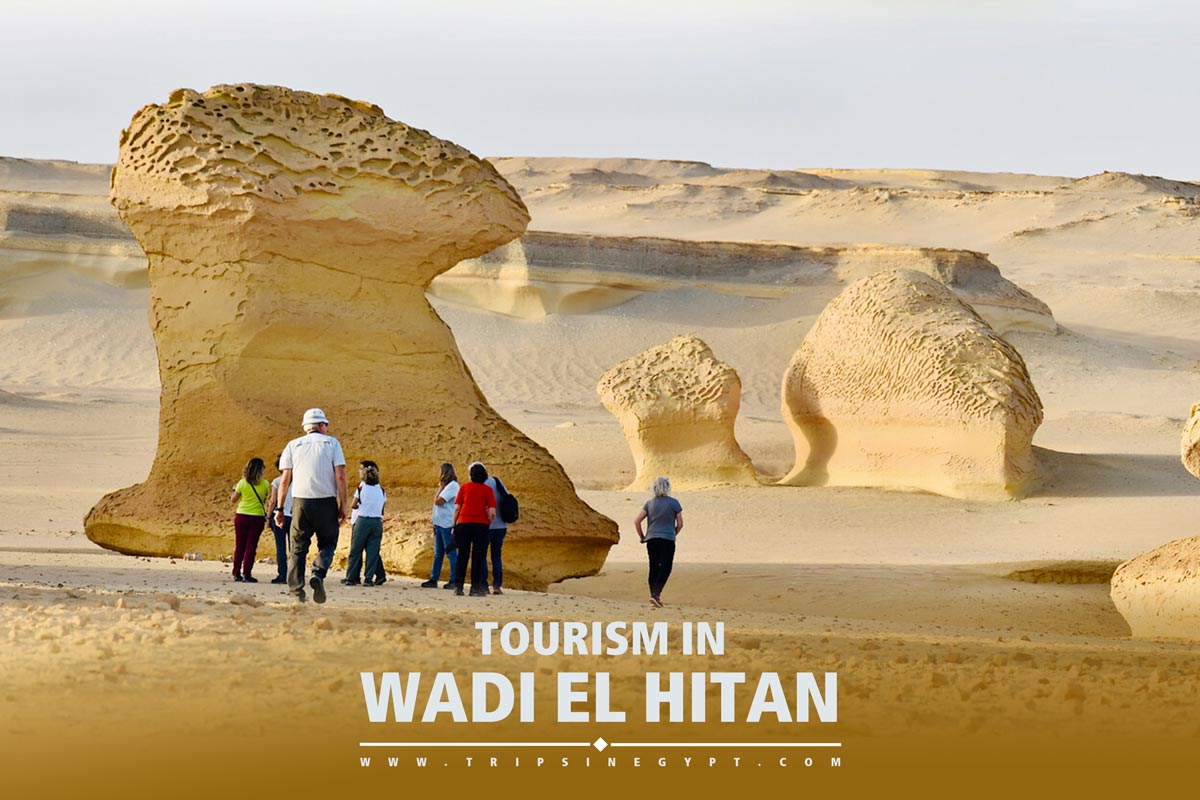Wadi Al-Hitan: Egypt's Valley of the Whales

Overview of Wadi Al-Hitan
Wadi Al-Hitan location and significance
Wadi Al-Hitan, also known as the Valley of the Whales, is located in the Fayum Governorate of Egypt, about 150 kilometers southwest of Cairo. It is highly significant as it has been a UNESCO World Heritage Site since 2005 due to its exceptional preservation of fossils that provide insights into the evolution of whales.
Wadi Al-Hitan geological features
The geological features of Wadi Al-Hitan are predominantly sedimentary rocks dating back to the Eocene epoch, around 37 to 40 million years ago. The site is characterized by well-preserved skeletons of early whales, known as archaeoceti, which showcase the transition of these marine mammals from land-dwellers to fully aquatic creatures. The fossils found in Wadi Al-Hitan provide valuable evidence for the evolutionary link between modern whales and their terrestrial ancestors.
Additionally, the valley displays various sandstone formations, limestone layers, and the remnants of an ancient marine environment, giving researchers a glimpse into the prehistoric past.
For visitors, Wadi Al-Hitan offers a unique opportunity to witness firsthand the remarkable fossil remains of early whales and other marine creatures in a desert setting. The site also serves as a significant educational resource for scientists studying the evolution of marine life and the geological history of the region.

Fossils in Wadi Al-Hitan
Types of fossils found in Wadi Al-Hitan
Wadi Al-Hitan, or the Valley of the Whales, boasts various types of fossils that provide insights into the ancient marine life of the Eocene epoch. The site is renowned for its well-preserved skeletons of early whales, including archaeoceti, showcasing the evolutionary transition from land to sea.
Additionally, visitors can marvel at fossilized remains of other marine creatures that inhabited the region millions of years ago, contributing to a rich paleontological record.
Fossil Preservation in Wadi Al-Hitan
Due to the exceptional geological conditions of Wadi Al-Hitan, fossils are remarkably preserved, offering scientists a glimpse into the past like few other sites can. The sedimentary rocks of the area have safeguarded these ancient remains for millions of years, allowing researchers to study the intricate details of the skeletons and better understand the evolutionary history of whales.
The meticulous preservation in Wadi Al-Hitan provides a unique opportunity for paleontologists and visitors alike to appreciate the rich biodiversity that once thrived in this prehistoric marine environment.

Wadi Al-Hitan UNESCO World Heritage Site
Wadi Al-Hitan UNESCO designation
When planning your visit to Wadi Al-Hitan, it's important to note that this site holds the prestigious title of being a UNESCO World Heritage Site. This recognition is due to its exceptional value to humanity and its remarkable natural beauty. The designation ensures that the area is protected and preserved for future generations to appreciate.
Conservation efforts in Wadi Al-Hitan
Wadi Al-Hitan benefits from ongoing conservation efforts to safeguard its unique geological features and fossil discoveries. These efforts include habitat restoration, monitoring of visitor impact, and educational initiatives to raise awareness about the importance of preserving this ancient site.
By supporting these conservation endeavors, visitors contribute to the long-term sustainability of Wadi Al-Hitan as a significant heritage site.

Geological History of Wadi Al-Hitan
Formation of Wadi Al-Hitan
When you explore Wadi Al-Hitan, you'll witness the remarkable geological history that has shaped this unique site over millions of years. The valley was formed during the late Eocene epoch, around 37 million years ago, through a combination of marine sedimentation and tectonic movements. The gradual erosion process by water and wind sculpted the valley into the breathtaking landscape we see today.
Ancient marine environment in Wadi Al-Hitan
As you delve into the ancient past of Wadi Al-Hitan, you'll be transported back to a time when this region was submerged under a vast sea. The site's distinct fossil-rich limestone formations bear witness to the prehistoric marine environment. Fossilized remains of ancient whales, sharks, and sea cows provide valuable insights into the evolution of marine life and the geological changes that have occurred over millennia.
Wadi Al-Hitan stands as a testament to Earth's rich history and the interconnectedness of geology, palaeontology, and environmental conservation efforts. By experiencing this extraordinary site firsthand, you become part of the ongoing legacy of preservation and appreciation for our planet's natural wonders.
Biodiversity in Wadi Al-Hitan
Flora and fauna in Wadi Al-Hitan
Wadi Al-Hitan is home to diverse flora and fauna adapted to the arid desert environment. Various plant species like acacia and tamarisk thrive alongside desert mammals such as sand foxes and gazelles.
Endangered species in Wadi Al-Hitan
| Endangered Species | Status | Conservation Efforts |
|---|---|---|
| Arabian Oryx | Endangered | Protected breeding programs. |
| Nubian Ibex | Vulnerable | Monitoring and habitat protection measures. |
| Sand Cat | Near Threatened | Conservation through research and education programs. |
Efforts are underway to protect and sustain the biodiversity of Wadi Al-Hitan for future generations to appreciate and conserve.

Activities in Wadi Al-Hitan
Hiking and trekking options in Wadi Al-Hitan
When visiting Wadi Al-Hitan, you can engage in various hiking and trekking options that cater to various fitness levels. The trails through the valley provide opportunities to immerse yourself in the geological wonders while enjoying the scenic desert landscapes.Whether you prefer short walks or longer treks, there are paths to suit your exploration style.
Photography opportunities in Wadi Al-Hitan
Photography enthusiasts will find Wadi Al-Hitan a paradise for capturing stunning shots of the unique geological formations, diverse flora, and fauna. From the fossilized remains to the desert sunset hues casting a golden glow over the valley, every corner offers a picturesque scene waiting to be captured through your lens.
Efforts to sustain the biodiversity of Wadi Al-Hitan are vital for ensuring the preservation and protection of the unique ecosystem found within this remarkable site. Each visit to this geological and biological treasure contributes to raising awareness and appreciation for the interconnectedness of nature's wonders.

Nearby Attractions
Attractions near Wadi Al-Hitan
When you explore the vicinity of Wadi Al-Hitan, you'll discover a range of attractions that complement your experience. From the majestic Faiyum Oasis with its lush greenery contrasting the desert surroundings to the ancient ruins of the Pyramid of Hawara, each site offers a unique glimpse into Egypt's rich history and natural beauty.
Combining visits to Wadi Al-Hitan with other sites
Wadi Al-Hitan serves as an excellent base for exploring nearby treasures such as the Valley of the Whales and the stunning landscapes of Wadi El-Rayan. By combining visits to these sites, you can delve deeper into Egypt's geological and archaeological wonders while enjoying the diverse environments that make this region a captivating destination.
